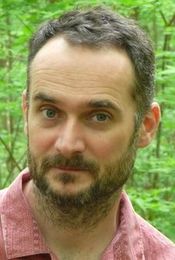By David George Haskell, The New York Times, March 27, 2013
 |
| David George Haskell |
BIOLOGY has returned to the nation’s highest court. It’s not Darwin’s theory of evolution on the docket this time, but the nature of sex. Defenders of Proposition 8, California’s ban on gay marriage, base their case on what they call the “objective biological fact” that procreation is an exclusively heterosexual process. Citing the 18th-century English jurist William Blackstone, they argue that marriage should be “founded in nature.”
This invocation of nature echoes other voices. Last December, before Pope Benedict XVI resigned, he used his Christmas greetings to the Roman Curia to deplore what he called a “new philosophy of sexuality” that manipulates and denies nature. Roy S. Moore, re-elected last fall as the Chief Justice of the Alabama Supreme Court, once let rip with less measured language, exclaiming in a child-custody case that homosexuality was “a crime against nature and a violation of the laws of nature and of nature’s God.” Meanwhile, Tennessee legislators have repeatedly sought the prohibition of any sexual education “inconsistent with natural human reproduction.” None of this is, in fact, new: Oscar Wilde’s trials hinged on the courts’ understanding of natural love and unnatural vice.
References to biology coat these arguments with a gloss of scientific rigor. But before we write nature into law, let’s take a stroll outside the Supreme Court’s chambers and check those biological facts. Descending the steps of the court, we enter Washington’s planted landscape, a formal park where nature stands alongside patriotic monuments and federal buildings. There is no shortage of counsel about biology here.
The grandeur of the National Mall is rightly famous. Less well known are the hermaphroditic sex lives of many of its inhabitants. Japanese cherry trees break bud in explosions of pink; male and female coexist at the heart of each flower. The American elms that frame the Mall’s lawns present a more reserved countenance to the world. But their inconspicuous lime-green flowers are biologically bisexual. Ginkgo, another tree common in Washington, follows a Prop 8-approved sexual separation, growing as discrete males and females. But even the ginkgo will sometimes surprise horticulturalists with a stray flower of the other sex.
An inspection of the bark of these trees reveals garden snails grazing on thin, vertical lawns of lichens, yeasts and algae. Like the trees, each sexually mature snail makes both egg and sperm. Mating among these gastropods is charged with romantic tension; two males and two females are caught up in every embrace. Downstream from the Mall, at the outlet of the Potomac, marine snails called slipper shells add yet another twist: they begin life as males, before maturing into females.
The snails on the trees graze on fungi that further enrich the Mall’s sexual diversity. Fungi don’t have “sexes,” as most humans understand the term. Subtle chemical markers on each fungal cell divide the species into “mating types.” In some species, dozens of such types occur. Some of these fungal cells — like the slipper shells — can’t resist the itch to switch types.
Looking up from the fungi, we see a bee with its head buried in a cherry blossom’s mop of reproductive parts, supping on sweet nectar, and a northern cardinal fusses in the foliage, seeking early-hatched caterpillars. If these birds and bees were the first to teach us about sex, we’ve forgotten part of the lesson. Just as some species that are mostly hermaphroditic contain unisexual individuals, some insects and vertebrates cannot be simply called male or female. Human biology joins in this rejection of binary claims of male and female. There is controversy in the scientific literature about how many people are intersex, but some estimates put the figure at up to 2 percent.
Of course, sexuality is more than an arrangement of cells. Bonds form between sexual partners that help define the social structure of each species. What does nature on the Mall teach us about these relationships? Look, for instance, at the mallards paddling in the nearby reflecting pools. If they are like mallards elsewhere, then one in 10 of them engage in homosexual sex.
Stepping from the northern border of the Mall into the Smithsonian’s National Museum of Natural History, we come face-to-taxidermied-face with our great ape relatives. Before these apes were sequestered in museum cabinets, homosexual bonds were a natural part of their lives. This is especially true for our closest living cousins, the bonobos and chimpanzees.
The facts of biology plainly falsify the oft-repeated notion that homosexuality is unnatural. Every species has evolved its own sexual ecology, and so nature resists generalizations. Does humanity’s natural inheritance include homosexual bonds and behaviors? Certainly. This conclusion is reinforced by the growing evidence that our sexual orientation is influenced by both our genes and the environment that we experience in the womb.
A wide, living rainbow arcs across the natural world. Diversity rules in sexuality, just as it does in the rest of biology. This natural variety does not provide ready-made moral guidance. But to claim that the only natural forms of sex and pair bonding occur between unambiguous males and females is to ignore the facts of human biology. Let those who wish for marriage to be “founded in nature” take note: the view outside the Supreme Court is full of life’s beautiful sexual variegation.
David George Haskell, a professor of biology at Sewanee: The University of the South, is the author of “The Forest Unseen: A Year’s Watch in Nature.”
No comments:
Post a Comment